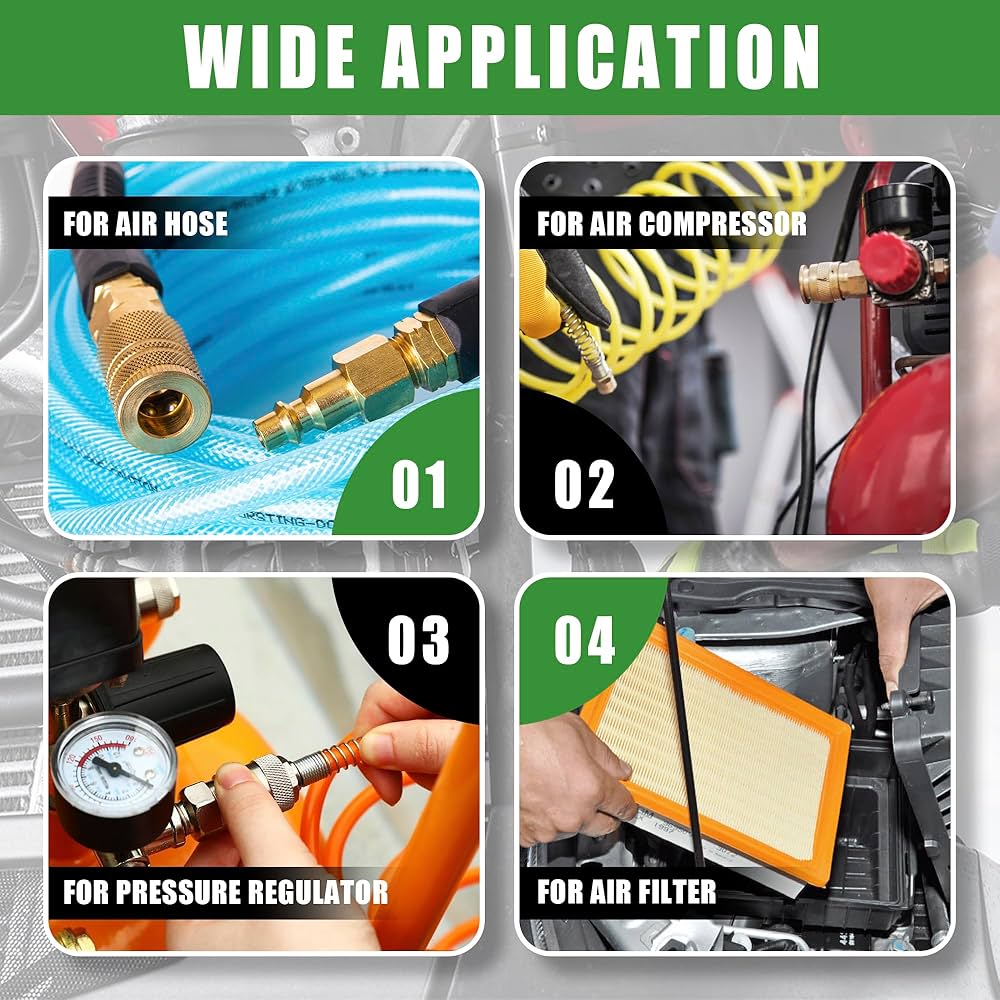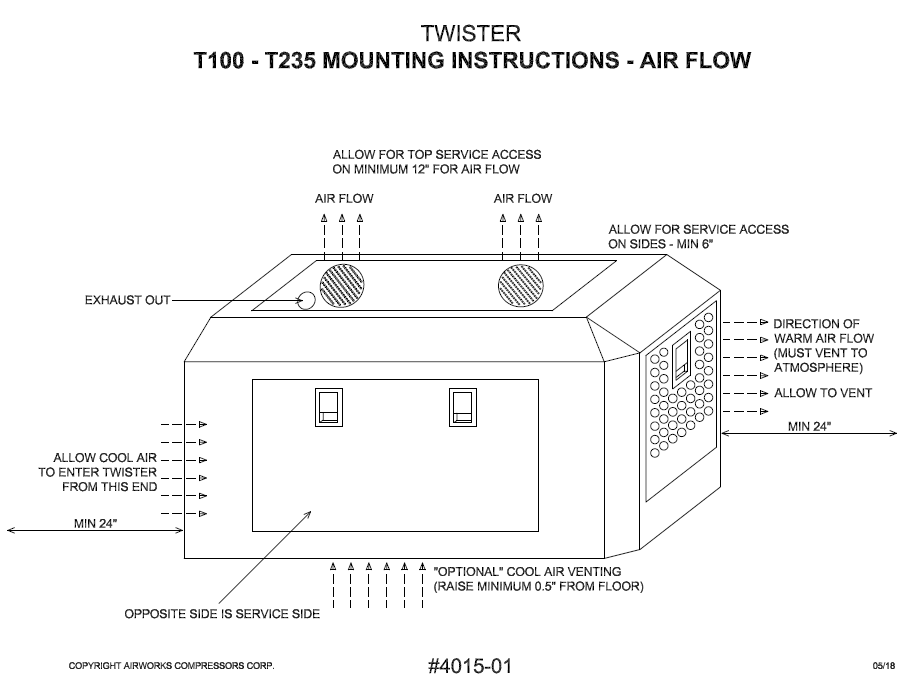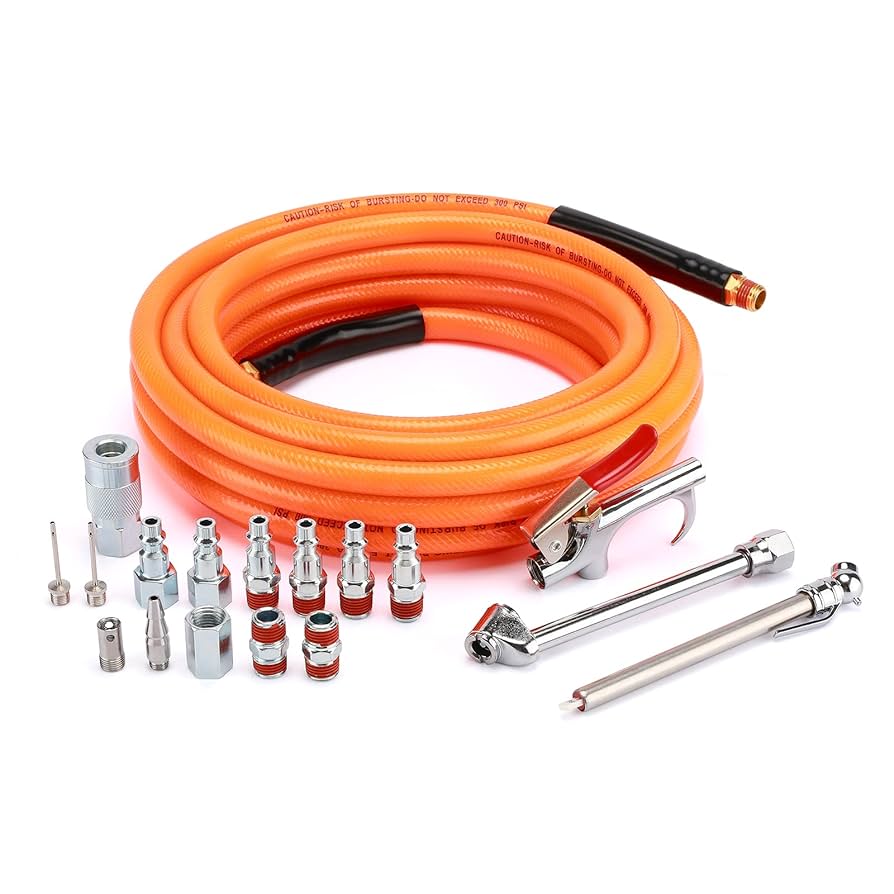If you’ve just bought an air compressor or need to replace your old air hose, you might be wondering how to connect it properly. Getting this right is crucial for your tools to work smoothly and safely.
Don’t worry—connecting an air hose to a compressor is simpler than it seems. In this guide, you’ll learn step-by-step how to make a secure connection that keeps your equipment running efficiently. Keep reading to avoid costly mistakes and get the most out of your compressor every time you use it.
Choose The Right Air Hose
Choosing the right air hose is key to connecting your air compressor effectively. The correct hose ensures good airflow and prevents leaks. It also makes your work safer and easier. Knowing the types and sizes helps you pick the best one.
Types Of Air Hoses
Air hoses come in several types. Rubber hoses are flexible and strong. They resist heat and wear well. PVC hoses are lighter and cheaper but less flexible. Hybrid hoses combine rubber and PVC for a balance of strength and flexibility. Choose a type that fits your job needs.
Matching Hose Diameter And Length
Hose diameter affects air flow. Larger diameters let more air pass through, improving tool performance. Common sizes are 1/4 inch, 3/8 inch, and 1/2 inch. Length matters too. Longer hoses reduce pressure and air flow. Pick a length that reaches your work area without excess slack.

Credit: www.amazon.sa
Select Compatible Fittings
Selecting compatible fittings is key to connect your air hose to the compressor safely. The right fittings ensure a tight seal and prevent air leaks. Choosing the wrong ones can cause poor performance or damage. Understanding fitting types and thread sizes helps you pick the correct parts.
Common Fitting Types
Several fitting types exist for air hoses and compressors. Quick-connect fittings allow easy and fast attachment. They snap in place and release with a simple pull. Another common type is the threaded fitting. These screw onto the hose or compressor securely. Push-to-connect fittings offer a simple push-in connection. Each type suits different needs and tools.
Ensuring Proper Thread Size
Thread size must match between the hose and compressor. Threads come in different measurements and pitches. Using the wrong size causes leaks or fitting damage. Check the compressor manual for recommended thread sizes. Measure the hose fitting threads with a gauge if needed. Match both parts to ensure a secure and lasting connection.
Prepare The Compressor
Preparing the compressor is the first step before attaching the air hose. This ensures safety and proper function. Take time to check the compressor carefully. A well-prepared compressor works better and lasts longer.
Turn Off And Unplug
Always turn off the compressor before connecting the hose. This stops the machine from running unexpectedly. Next, unplug the compressor from the power source. This prevents any electric shock or accidents. Safety comes first in every step.
Check The Outlet Valve
Look at the outlet valve where the air hose will connect. Make sure it is clean and free of dirt. A dirty valve can block air flow or cause leaks. Check that the valve is not damaged or worn out. A good valve ensures tight and secure hose connection.
Attach The Hose To The Compressor
Attaching the hose to the compressor is a key step for safe and efficient use. A solid connection stops air leaks and keeps pressure steady. This process is quick and simple with the right steps. Follow carefully to ensure a tight fit and long-lasting use.
Connect The Quick Coupler
Start by checking the quick coupler on the compressor. This is where the hose snaps in. Pull back the sleeve on the coupler to open it. Push the hose fitting into the coupler fully. Release the sleeve to lock the hose in place. You will hear a click sound. This confirms the hose is connected correctly.
Secure The Connection
Once connected, tug the hose gently. The hose should not come loose. Check for any air leaks around the connection. Tighten the fittings by hand if needed. Avoid using tools that might damage the threads. A secure connection means better air flow and safety during use.
Connect Hose To Air Tools
Connecting the air hose to air tools is a key step in using your compressor safely and effectively. This process ensures the tool receives the right air pressure. A proper connection helps the tool work well and last longer. Follow the steps carefully to avoid common mistakes and keep your workspace safe.
Attach Tool Fittings
Start by selecting the right fitting for your air tool. Most tools use quick-connect fittings for easy attachment. Push the fitting firmly into the hose end until it clicks. Check that the connection is tight to prevent air leaks. If the fitting is loose, use thread tape or a wrench to secure it.
Check For Air Leaks
Turn on the compressor and listen for any hissing sounds near the connection. Spray soapy water on the fitting and hose joint to spot leaks. Bubbles will form if air escapes. Tighten the fittings again if you find leaks. A secure connection saves air and keeps the tool running smoothly.
Test The Setup
Testing the setup is an important step after connecting your air hose to the compressor. This ensures the system works safely and efficiently. Take your time to check every part carefully. A proper test helps avoid leaks and other problems.
Power On And Monitor Pressure
Start by turning on the air compressor. Watch the pressure gauge closely. The gauge should rise steadily to the recommended level. Do not let it go above the maximum limit. If the pressure does not build up, check the connections again. Proper pressure shows the hose and compressor are linked well.
Inspect For Proper Airflow
Hold the end of the air hose away from your face. Listen for a steady, strong airflow. Weak or uneven air means there might be a leak or blockage. Check the hose fittings for tightness. Replace any worn parts to maintain good airflow. A smooth air stream means your setup is ready for use.
Maintain Your Air Hose And Compressor
Maintaining your air hose and compressor ensures they work well for a long time. Proper care prevents damage and saves money on repairs. Keep your tools clean and check them often to avoid problems. A well-kept air hose and compressor give better performance every time you use them.
Regular Inspection
Check your air hose and compressor before each use. Look for cracks, leaks, or worn parts on the hose. Listen for strange noises from the compressor. Tighten any loose fittings to stop air leaks. Early spotting of problems helps avoid big repairs later.
Cleaning And Storage Tips
Clean the air hose with a dry cloth after use. Remove dirt and dust from the compressor vents. Store the hose coiled loosely in a dry place. Avoid sharp bends or kinks that can cause damage. Keep the compressor covered to protect it from dust and moisture. Proper storage extends the life of your tools.

Credit: airworkscompressors.com

Credit: www.amazon.ca
Frequently Asked Questions
How Do I Connect An Air Hose To A Compressor?
To connect an air hose, first ensure the compressor is off. Attach the hose fitting securely to the compressor’s outlet. Tighten it by hand or with a wrench for a snug fit. Check for leaks before use.
What Type Of Air Hose Fits Most Compressors?
Most compressors use 1/4-inch or 3/8-inch air hoses. Choose a hose with compatible fittings, usually quick-connect couplers. Check your compressor’s specifications to ensure proper size and pressure rating.
Can I Use Any Air Hose With My Compressor?
Not all air hoses are compatible. Use hoses rated for your compressor’s pressure. Avoid hoses that are too thin or weak, as they can burst or leak under pressure.
How Do I Prevent Air Leaks At The Connection?
Ensure fittings are clean and dry before connecting. Tighten hose fittings properly but avoid over-tightening. Use Teflon tape on threaded connections to improve the seal and prevent leaks.
Conclusion
Connecting an air hose to a compressor is simple with the right steps. Always check the hose and compressor for damage first. Attach the hose securely to avoid air leaks. Turn on the compressor and test the connection carefully. Regular maintenance helps keep the equipment working well.
Following these tips saves time and prevents problems. Now, you can use your air tools safely and easily.

